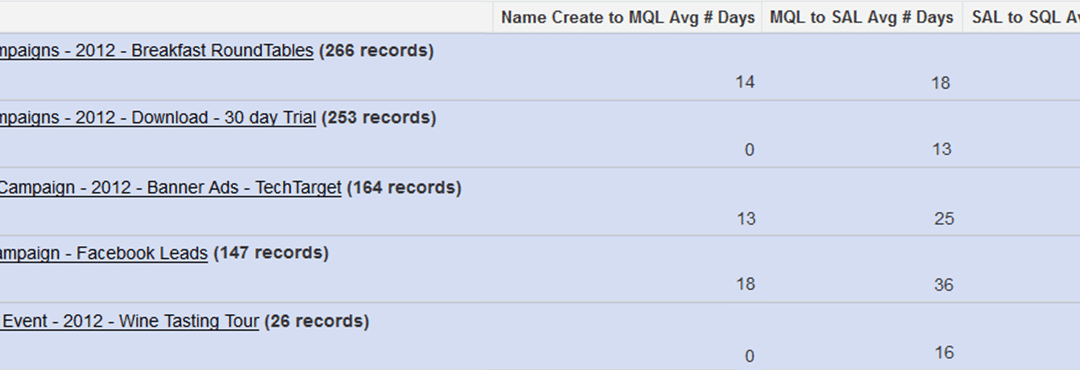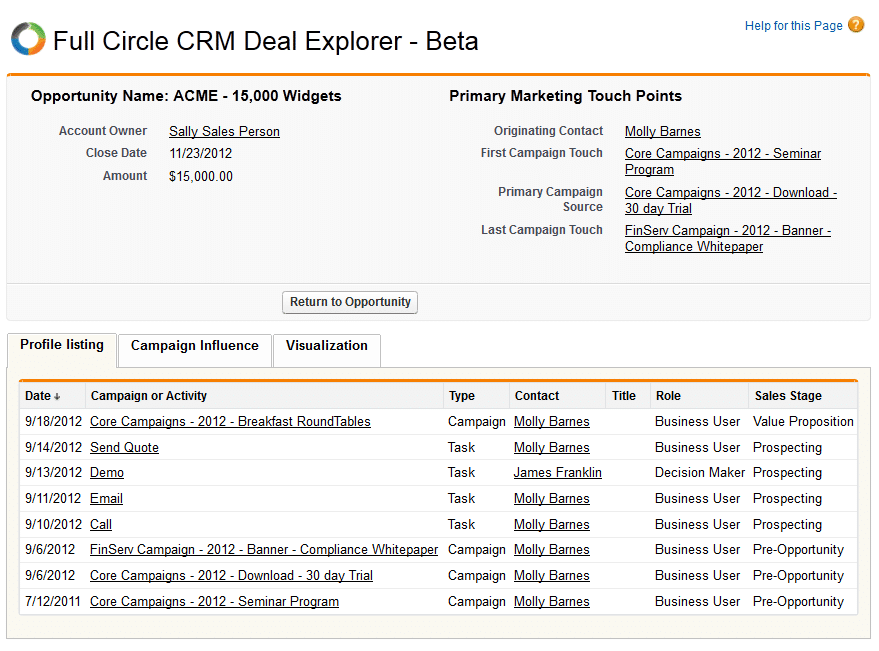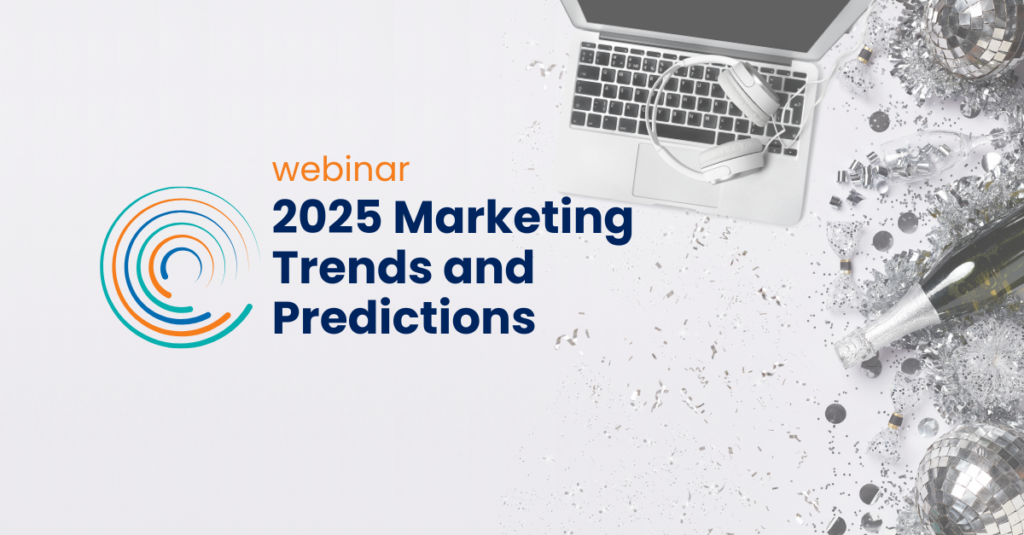
B2B marketers need to be able to figure out which campaign touches drive engagement and, ultimately, conversions and revenue. Attribution models can yield insights that allow marketers to make better spend allocation decisions. Single-touch attribution models like first-touch, last-touch and tipping-point can help marketers better understand lead generation, conversions, and the marketing-to-sales handoff.
Multitouch attribution can also generate important insights on how campaigns impact pipeline and revenue, but it’s critical to avoid mistakes during implantation and to understand the limitations and capabilities of each type of model. Here are five tips that can help you improve your multitouch attribution results.
- Create models that reflect your marketing strategy. It may sound simple, but it’s easy for marketers to get caught up in the different possibilities attribution models offer and miss this basic step. Are you running campaigns to improve the engagement of both new and active leads? If so, consider an even-spread multitouch attribution model that evaluates campaigns across the entire sales cycle. Are you looking to influence prospects later in the sales cycle? Take a look at a time decay attribution model, which gives later touches greater weight.
- Make you understand the business question you’re asking. In addition to aligning the model you choose with the marketing strategy, make sure you understand the business question you’re working to answer. For example, if one campaign strategy is to activate new influencers at top target companies, the business question might be, “What was the lead gen campaign’s impact on pipeline and sales this quarter vs. last quarter?” You’ll need to account for the business question too when setting up reports based on your multi-touch model.
- Apply appropriate reporting parameters. Once you have clarity on the business question you’re asking and choose a model that reflects the marketing strategy, it’s time to apply the right reporting parameters so that your dashboards and reports give you meaningful data. For instance, you might be examining results on a particular date, timeframe, or market segment. Setting the relevant parameters will ensure you get data that is actionable and relevant to the business question you’ve set out to answer with your campaign analysis.
- Combine attribution and funnel metrics to drive efficiency. This holds true for single-touch and multitouch attribution methods: Attribution helps you invest more efficiently, but you’ll also need funnel metrics to drive process efficiency. Also, keep in mind that it’s crucial to use CRM as your data repository because it is the revenue system of record. When you analyze funnel metrics inside the CRM, you can track volume, velocity, and conversion rates and identify any process issues with sales to drive overall efficiency.
- Hold regular meetings with sales and marketing colleagues. Related to the point above, it’s important to make sure everyone is on the same page, and that requires regular meetings with your relevant marketing ops/lead gen colleagues plus the sales/revenue teams that depend on your campaigns to generate business. During meetings, the group should review funnel metrics to identify trends and sticking points, and relevant individuals should take on action items to alleviate bottlenecks as appropriate.
Marketing attribution in general and multitouch attribution specifically will remain key components of B2B campaign measurement because they are essential for efficiency. Without actionable data on campaign performance, marketers can’t invest budget dollars where they produce the best results.
But it’s important to keep in mind that attribution is one-half of the efficiency equation. Funnel metrics matter too. When you can track both inside the CRM, you’ll be able to drive efficiency across the board and in even collaboration with your sales team.

MQL Velocity – Why It Matters
Jason Lemkin wrote a great post last month on Why lead Velocity Rate (LVR) is the Most Important Metric in SaaS. He argues that pipeline metrics alone are not enough to predict if you will hit your numbers due to inconsistent rep behavior and encourages organizations...
Bulldog Solutions Joins Forces
Full Circle CRM and Bulldog Solutions Join Forces to Bring Enhanced Revenue Performance Management Solution to Salesforce Customers Bulldog Solutions Partners with Full Circle CRM to Deliver and End-to-End Funnel Management Solution for Sales and Marketing...

Leads and Contacts OR Leads VS. Contacts
I’ve recently encountered much debate and curiosity regarding best practices around Lead vs Contact usage in Salesforce. While in some cases organizations will have certain divisions of their sales teams work exclusively in leads, we see other organizations that have...

Status Values & Disqualifying in Salesforce
Jay Famico recently wrote a blog post for SiriusDecisions about Sales Accepted Leads: Disqualification Reasons. This best practice of capturing the reason a lead is disqualified is one of Full Circle Insights' recommendations as well. We think this feedback loop...

The Power of Marketing Metrics
Jon Miller, VP Marketing and co-founder of Marketo, recently wrote a blog post called "Where Marketing Metrics Go Wrong" that caught my attention. I completely agree with Jon when he says that the problem with most marketing metrics is that while they measure...

Simplify Salesforce Business with Formulas
It is not uncommon to create business processes based on interpreting sets of data inside salesforce.com such as: Assignment rules Lead/Contact Scores Workflow rules Apex code Formulas can help simplify the management of complex business processes where...

The Holy Grail for Sales and Marketing
A lot of B2B companies are seeking the Holy Grail for sales and marketing. They want to know what is the most efficient way for customers to learn about and buy their product. In this search for lots of revenue at the lowest cost possible, I've sat in many...
Full Circle Insights Partners with Marketo
Full Circle CRM Partners with Marketo to Bring Best-Practice Response Lifecycle Management to Salesforce Marketing Users Unique Marketing Performance Management Solution Transforms Salesforce Marketing Data for Marketo Customers MENLO PARK, CA – November 12, 2012 –...
Learn Salesforce Campaigns Impact on Deals
Most opportunities or closed deals should have at least one Salesforce Campaign associated with them (if they don’t that is a much bigger problem), but are these actually the Salesforce Campaigns that played the largest role in creating that opportunity or closing...
Best Practice: Sales Assignment Time-Outs
One mechanism we employ at Full Circle Insights is the concept of Assignment Time-Outs, which facilitate a forced time-out after a rep has engaged with a prospect and disqualified them for the time being. Time-outs prevent a name from returning to sales the...




